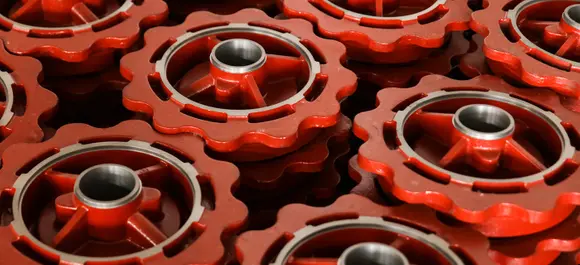Mobile:+86-311-808-126-83
Email:info@ydcastings.com
Understanding the Importance of Circulation Pump Impellers in Fluid Dynamics Systems
Understanding the Circulation Pump Impeller A Critical Component in Fluid Dynamics
The circulation pump impeller is a crucial component in various engineering and industrial applications, particularly in the management and movement of liquids. Whether in heating systems, swimming pools, aquariums, or water treatment facilities, the design and functionality of the impeller directly influence the performance and efficiency of the entire system.
What is a Circulation Pump Impeller?
An impeller is a rotating component of a pump designed to increase the pressure and flow of a fluid. In circulation pumps, the impeller's role is to drive the movement of liquids, ensuring that water or other fluids are effectively circulated within a system. By converting mechanical energy into kinetic energy, the impeller accelerates the fluid and propels it through the pump and the intended circuit.
Types of Impellers
Impellers come in various designs and configurations, each suited for specific applications and fluid characteristics. The two most common types of impellers used in circulation pumps are
1. Open Impellers These impellers consist of blades without any covering (shroud). They are effective in handling fluids with suspended solids but may have a lower efficiency compared to closed impellers. Open impellers tend to be simpler in design and easier to clean, making them suitable for applications where maintenance is frequent.
2. Closed Impellers Featuring blades enclosed between two shrouds, closed impellers are more efficient for moving clean fluids and can achieve higher pressures. Their enclosed design reduces the chances of cavitation—a phenomenon that occurs when vapor bubbles form in low-pressure areas of the pump, potentially leading to damage.
The Importance of Impeller Design
The design of an impeller significantly affects the performance of a circulation pump. Key factors to consider include
- Blade Shape and Number The geometry of the blades can impact the flow rate and pressure generated by the pump. More blades can increase the flow rate, while the shape can optimize for either efficiency or pressure gain.
- Diameter The impeller diameter is critical. Larger impellers can move more fluid but require more power to operate. Conversely, smaller impellers may be more efficient but can limit the volume of fluid transported.
circulation pump impeller

- Material Impellers can be constructed from various materials, including stainless steel, plastic, or composite materials. The choice of material depends on the fluid being pumped, as some substances are more corrosive than others.
Performance and Efficiency
The efficiency of a circulation pump impeller can be measured in terms of its hydraulic efficiency and overall system performance
. Optimally designed impellers can achieve efficiencies above 70-80%, translating to lower energy consumption and reduced operational costs. Poorly designed impellers, on the other hand, can lead to excessive energy use, increased noise levels, and even system failure due to cavitation or wear and tear.To ensure optimal performance, it is essential to regularly maintain and inspect circulation pump impellers, cleaning them to prevent the buildup of debris and checking for signs of erosion or damage.
Applications of Circulation Pump Impellers
The applications of circulation pump impellers are extensive, spanning residential, commercial, and industrial sectors
- Heating Systems In hydronic heating systems, circulation pumps and their impellers distribute hot water through radiators or underfloor heating.
- Aquatic Systems Aquatic habitats, such as aquariums and fish farms, utilize circulation pumps to maintain optimal water circulation, ensuring oxygenation and water temperature regulation.
- Water Treatment In wastewater treatment plants, impellers help in moving and aerating the water, promoting efficient processing and purification.
Conclusion
The circulation pump impeller plays an indispensable role in fluid dynamics, influencing efficiency, performance, and durability of pumping systems across various applications. A deep understanding of its design and function empowers engineers and technicians to make informed decisions, promoting innovation and efficiency within their operations. By prioritizing the right impeller design and maintaining the system properly, industries can optimize their processes, save energy, and reduce long-term costs, ultimately achieving better outcomes in fluid management.
-
Understanding Metal Casting TechniquesNewsApr.02,2025
-
Understanding Exhaust Manifolds for Enhanced Engine PerformanceNewsApr.02,2025
-
The World of Metal FabricationNewsApr.02,2025
-
Key Components for Pump and Turbo EfficiencyNewsApr.02,2025
-
Essential Tools for Automotive Maintenance and RepairNewsApr.02,2025
-
Durable Valve Components for Effective Water ManagementNewsApr.02,2025











